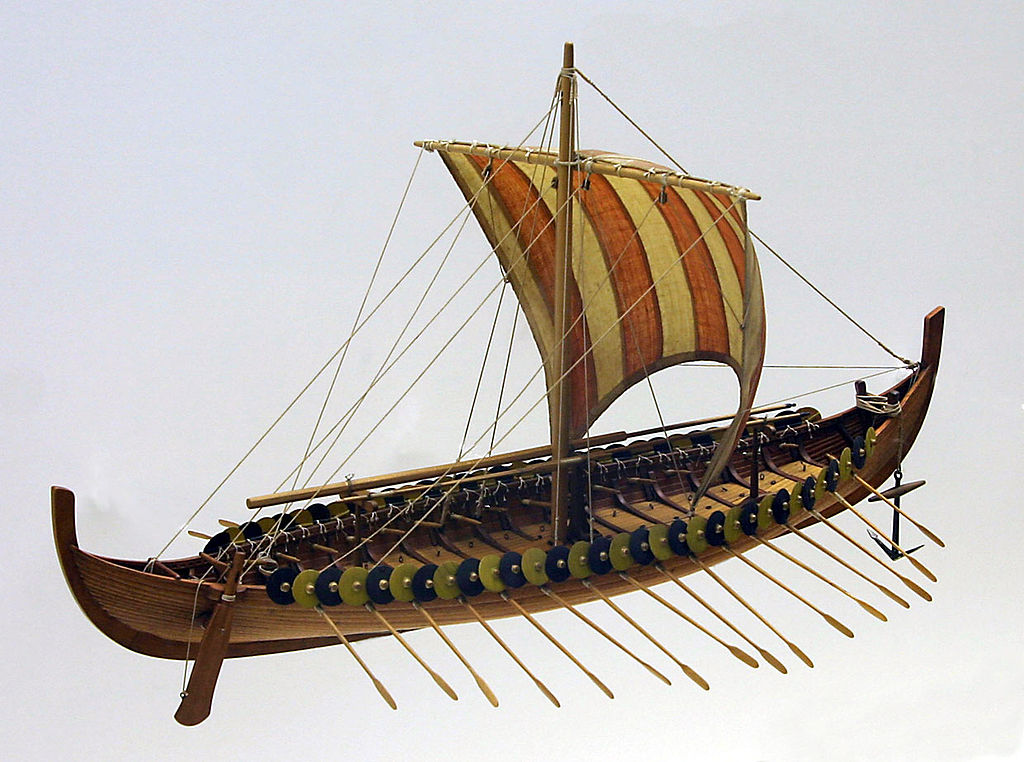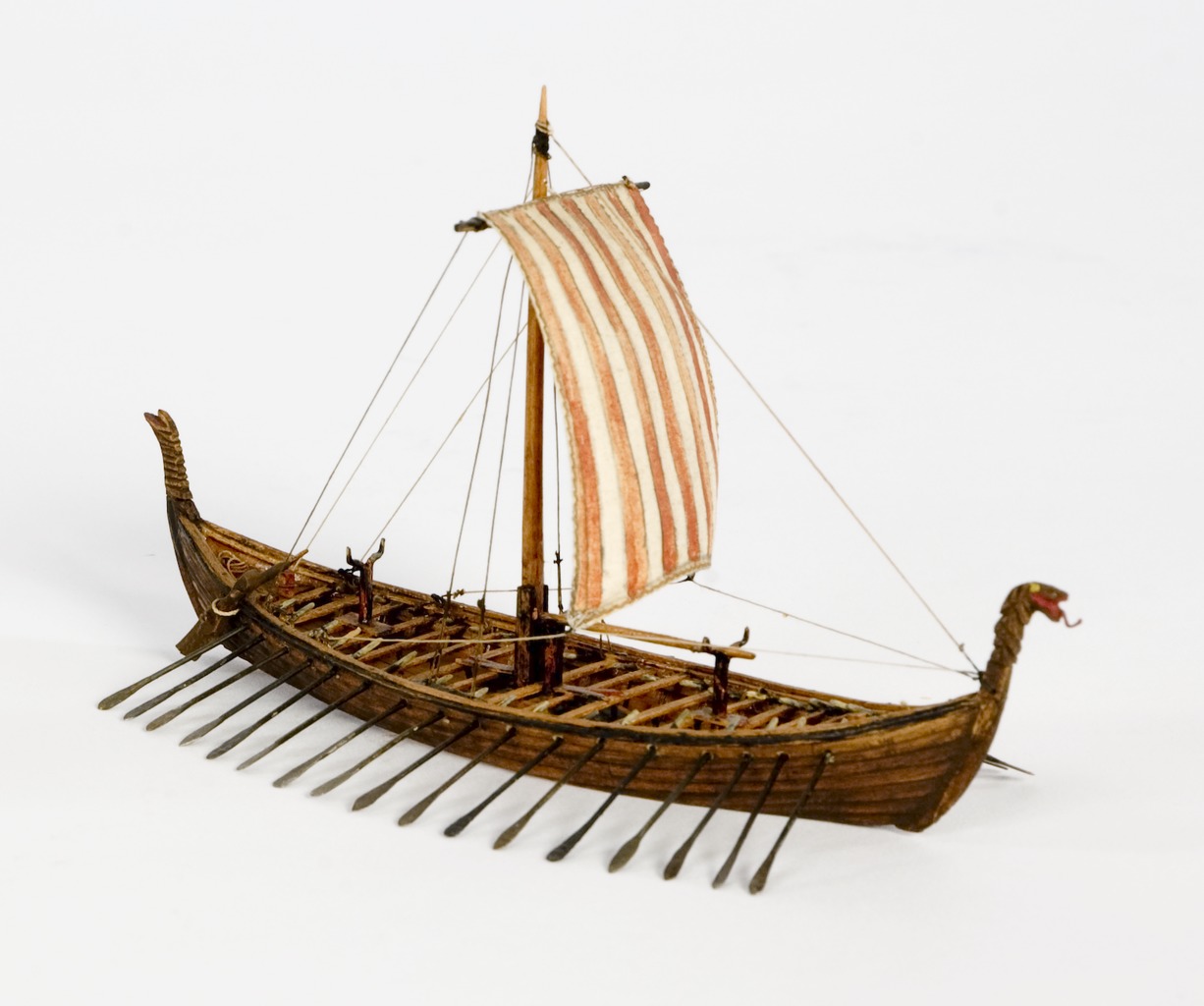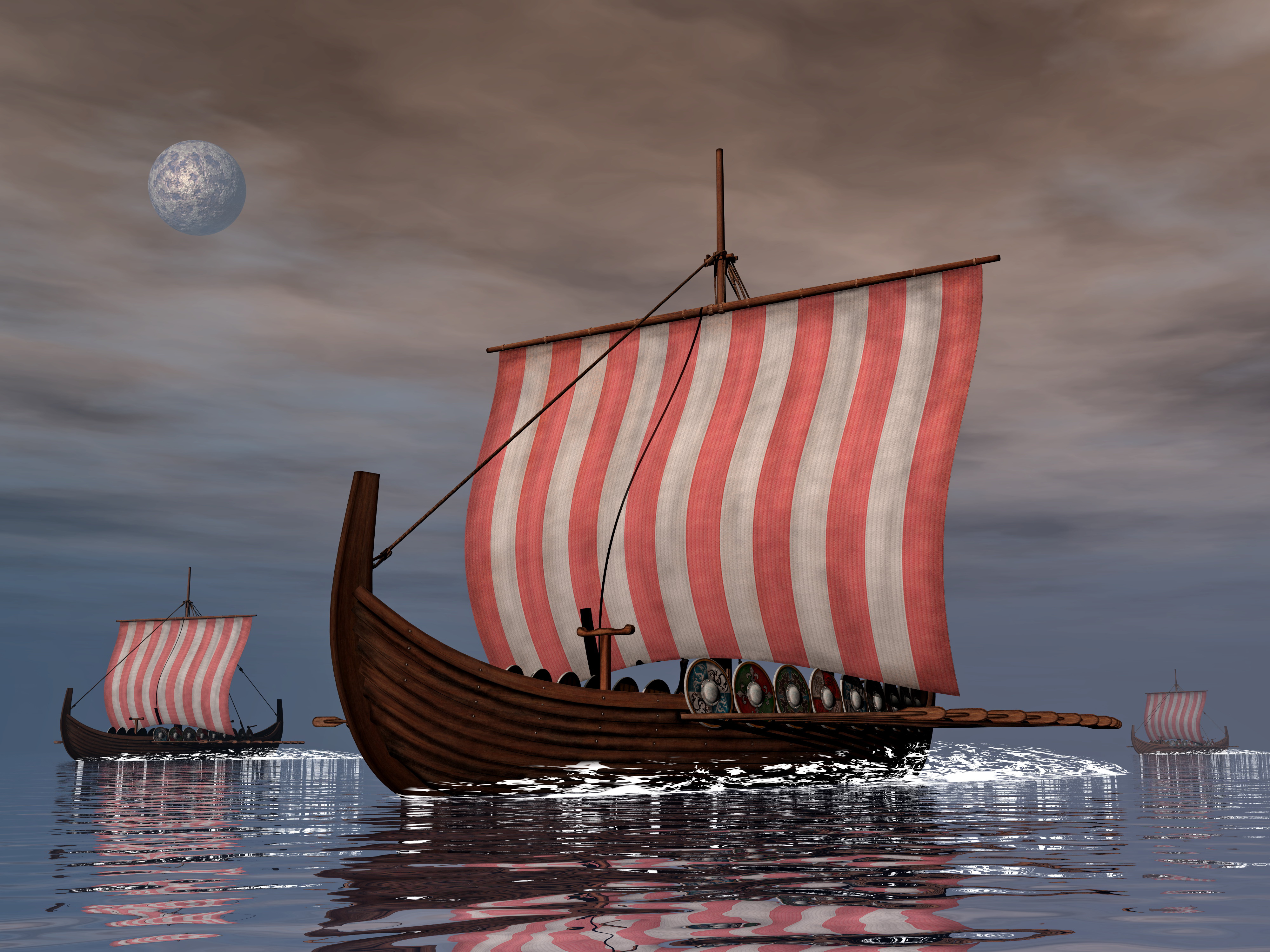
A number of Viking ships, or parts thereof, have been recovered by archaeologists. Those few ships reveal much of ship construction. Viking Age: Everyday life during the extraordinary era of the Norsemen, by Kirsten Wolf, provides some background on ships of the era.
This post has five illustrations of Viking ships.
Ship construction – warships
Estimates are to build a Viking ship of average size of about 65 or 82 feet in length would require 11 trees 3 feet in diameter and 16 feet long along with another very tall tree in the range of 50 to 59 feet, which would be used for the keel.

Skuldelev 5 is estimated at 56 feet long with a beam of 8 feet. It is estimated to have carried somewhere between 20 and 30 men.
Skuldelev 5 (yes the text makes two references to ship #5; I’m not sure which of them is actually #2) is estimated to be between 91 and 95 feet long with a beam of 13 feet (text says 4 m or 3.1 feet, so there is obviously a “1” dropped from the foot measurement). Ship is estimated to have a crew of between 40 and 50 men.
Author says the working definition for a longship is one with 32 oars or more.
Ship construction – travel ships

This is where the Gokstad and Oseberg ships enter into the discussion. They were more likely used for travel instead of fighting. The Oseberg is 72 feet long and has a 16 foot beam. It has 15 oars on each side for a total of 30.
The Gokstad ship is more seaworthy and sturdy, meaning it was likely use for travel in open ocean while the Oseberg was more likely for sheltered travel. The Godstad ship is 76 feet long and 17 feet wide. Weight empty is 8.5 tons. Carrying 10 tons of cargo, it would have only drawn 3 feet of water. It has 16 pairs of oars, meaning there would’ve been a 32 man crew. However, the ship was found with 64 shields meaning it most likely had a double crew.
Update 1/25/18: The typical comment I’ve read says the Oseberg ship was intended only for travel in coastal waters or the Oslo fjord. It was not designed for travel in the open ocean. The Vikings – A History, by Robert Ferguson, offers a different read on the design of the Oseberg ship. He reports tjat recent electronic scans of the wood, the horizontal ribs at the bow should have been curved not straight. The implication is the ship had a broader bow than the reconstructed version, and thus able to travel in open ocean.
Mr. Ferguson also reports that dendrochronological analysis shows the trees used to make the boat were felled n 820 AD. Other analysis shows use of the ship ended in 834.
Ship construction – cargo ships

The cargo ships did not have the maneuverability of the warships and had a much larger cargo capacity. Book says they normally had an open cargo hold in the middle of the ship and a permanent deck in the front and back. There’d only be a few oars, which indicates sail was the typical form of power. As a result this would require a small crew.
One recovered cargo ship, Skuldelev 3, is 47 feet long and 11 feet wide. It had a cargo capacity of around 4.6 tons.
Distances at sea were measured in terms of the number of days sailing. This is based on an older nautical mile called a vika (singular) or vikur (plural), which is equal to six nautical miles today. One day rowing would have been six vikur, or 36 nautical miles. A day’s sailing would be 18 vikur, or 142 nautical miles.

Next: levy system used to raise warriors for battles